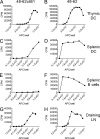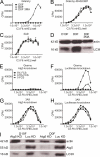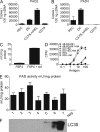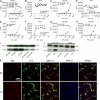Autophagy in antigen-presenting cells results in presentation of citrullinated peptides to CD4 T cells
- PMID: 22162830
- PMCID: PMC3244027
- DOI: 10.1084/jem.20110640
Autophagy in antigen-presenting cells results in presentation of citrullinated peptides to CD4 T cells
Abstract
Antibody responses to citrullinated self-proteins are found in autoimmunities, particularly in rheumatoid arthritis, where they serve as a diagnostic indicator. We show here that processing of the protein hen egg-white lysozyme (HEL) resulted in citrullination of peptides presented on class II MHC molecules by antigen-presenting cells. The presentation of the citrullinated peptides but not of the unmodified peptides was associated with autophagy. Dendritic cells (DCs), macrophages, and thymic DCs presented citrullinated peptides constitutively. Their treatment with 3-methyladenine (3MA) blocked presentation of citrullinated HEL peptides, but presentation of unmodified peptides was not affected. Presentation of citrullinated peptides was not detected on B cells or B lymphoma cells under normal culture conditions. In B cells, engagement of the B cell antigen receptor was required for presentation of the citrullinated peptides, also inhibited by 3MA. B lymphoma-expressing HEL cells presented citrullinated peptides only after brief serum starvation. This presentation was reduced by 3MA or by reduction in Atg5 expression. Presentation of the unmodified peptides was not changed. The findings indicate a linkage between autophagy and autoreactivity through the generation of this neo-epitope.
Figures





References
-
- Dengjel J., Schoor O., Fischer R., Reich M., Kraus M., Müller M., Kreymborg K., Altenberend F., Brandenburg J., Kalbacher H., et al. 2005. Autophagy promotes MHC class II presentation of peptides from intracellular source proteins. Proc. Natl. Acad. Sci. USA. 102:7922–7927 10.1073/pnas.0501190102 - DOI - PMC - PubMed
Publication types
MeSH terms
Substances
Grants and funding
LinkOut - more resources
Full Text Sources
Other Literature Sources
Molecular Biology Databases
Research Materials

